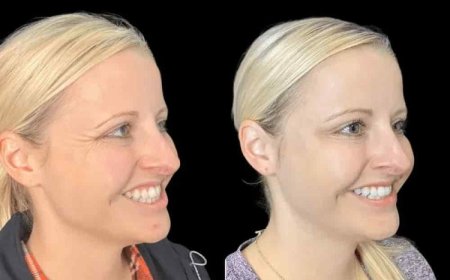Top 10 Proven Treatments for Autism in 2025
Explore the top 10 proven treatments for autism in 2025. From early intervention to new therapies, learn what works best for your child's development.

Introduction
Finding the right treatment for autism can feel overwhelming. With so many therapies, opinions, and approaches out there, how do you know what actually works? The good news is2025 has brought incredible advancements in autism therapy. Whether you're a parent, caregiver, or educator, understanding the latest and most effective treatments can make a huge difference in a child's life.
In this article, we explore the Top 10 Proven Treatments for Autism in 2025. These are evidence-based, widely accepted by professionals, and tailored to support individuals across the autism spectrum. Each method has its strengths, and many families find success through a combination of treatments.
Lets dive in.
1. Applied Behavior Analysis (ABA) Therapy
ABA remains the gold standard in autism treatment. This structured, reward-based approach helps improve communication, learning, and social behavior. Therapists break skills into small steps and use positive reinforcement to teach them.
Why it's effective:
ABA is research-backed, highly customizable, and used worldwide. It helps reduce unwanted behaviors and teaches essential life skills.
2. Speech and Language Therapy
Many children with autism have difficulty expressing themselves or understanding others. Speech therapy focuses on improving verbal and nonverbal communication, such as gestures, facial expressions, and tone of voice.
What's new in 2025:
Therapists now use augmented reality (AR) tools and AI-driven apps to engage children in fun and interactive ways.
3. Occupational Therapy (OT)
Occupational therapists help children develop the skills they need for daily living. From holding a pencil to brushing teeth, OT supports independence and confidence.
Common focus areas:
-
Sensory integration
-
Fine motor skills
-
Self-care routines
In 2025, many OT programs are combined with play therapy to make sessions more engaging for kids.
4. Parent-Mediated Intervention (PMI)
This method empowers parents to become active therapists in their childs development. Trained professionals guide parents to use techniques at home, during daily routines.
Why it works:
Children spend most of their time with their parents. PMI brings therapy into natural settings, making progress smoother and more consistent.
5. Early Start Denver Model (ESDM)
Ideal for toddlers and preschool-aged children, ESDM is a play-based therapy that merges ABA principles with developmental and relationship-based approaches.
How it helps:
Its gentle, fun, and focuses on building trust and engagement between the child and the therapist (or parent).
2025 update:
Now enhanced with digital tools to track developmental milestones and personalize learning games.
6. Social Skills Training
One of the core challenges for children with autism is building and maintaining social connections. Social skills training helps teach kids how to interact, take turns, read social cues, and respond appropriately in group settings.
Modern innovations:
-
Peer mentorship programs
-
Group video chats for social practice
-
Gamified social simulations
These help kids learn real-world interaction skills in a supportive environment.
7. Assistive Technology & AAC Devices
For nonverbal or minimally verbal individuals, assistive technology can be life-changing. Augmentative and Alternative Communication (AAC) tools help them express needs, feelings, and thoughts.
2025 tech highlights:
-
AI-powered voice generators
-
Eye-tracking devices
-
Wearable communication aids
These tools are now more affordable and accessible than ever.
8. Dietary and Nutritional Interventions
While diet is not a cure, many parents report improved behavior, focus, and digestion after eliminating certain foods or introducing supplements.
Popular options:
-
Gluten-free, casein-free diets
-
Omega-3 fatty acid supplements
-
Gut microbiome balancing
Note: Always consult a pediatrician or nutritionist before making changes.
9. Cognitive Behavioral Therapy (CBT)
CBT is widely used to help children and teens with autism manage anxiety, depression, and obsessive thoughts. It teaches coping strategies, emotional regulation, and problem-solving.
CBT in 2025:
Digital CBT programs with gamified elements are helping kids learn these skills more independently and in a fun way.
10. Animal-Assisted Therapy
Interaction with trained therapy animals (dogs, horses, etc.) can be incredibly therapeutic for individuals with autism. It helps with emotional regulation, social interaction, and even motor skills.
Benefits include:
-
Reduced stress and anxiety
-
Improved focus
-
Encouragement of empathy and connection
Whats new:
Increased use of virtual pet therapy programs for remote or underserved areas.
How to Choose the Right Treatment
Theres no one-size-fits-all solution for autism. What works for one child might not be effective for another. Here are a few tips to help guide your decision:
-
Start with a professional evaluation. A licensed therapist or developmental pediatrician can assess your childs needs.
-
Set clear goals. Focus on communication, behavior, academics, or independence.
-
Try a mix of therapies. Often, a combination leads to better results.
-
Measure progress. Regular assessments help you know whats working.
And most importantlybe patient. Progress may be slow, but every step counts.
Real Parent Experiences
Many families using these therapies in 2025 have seen encouraging outcomes. Here's what some parents have shared:
ABA helped my son say his first words. It was life-changing.
Jenna, New York
We saw amazing results after combining OT with social skills training.
Raj, California
Using AAC devices gave our daughter a voice. Now she can tell us what she wants!
Emily, Texas
These stories are powerful reminders that support, consistency, and the right tools can open doors.
Conclusion
The landscape of autism treatment is evolving rapidly. Whether you're just starting your journey or looking to upgrade your current approach, 2025 offers more hope and options than ever before. The key is to stay informed, work with professionals, and focus on the unique needs of your child.
If youre looking for guidance, our team at Kickstart Therapy is here to help. We specialize in personalized care plans that blend traditional and innovative therapies.
For a deeper dive into todays most effective options, check out our full breakdown of the Top 10 Proven Treatments for Autism in 2025.




































